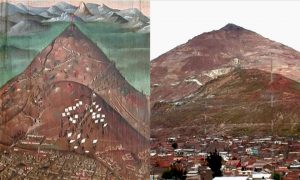
An EXTRACTION Event
Tuesday, February 28, 2017
Digital Arts Research Center (DARC) 108
Join us from 5:30-7:30 pm for an evening of short artist films. This screening is part of EXTRACTION, a research program exploring the industrial operations which abuse natural resources and thrive off of labor exploitation and racialized impoverishment.
The following four films will be screened:
David Kelly / Patty Chang, Spiritual Myopia, 2015 (15 min)
Spiritual Myopia portrays the invisible labor and desire of the residents of the oil industry boom towns of Fort McMurray in the Canadian Tar Sands and the refining town of Port Arthur Texas. Boston-based artists David Kelly and Patty Chang investigate the two cities that function as terminal nodes of the proposed Keystone XL oil pipeline which would span the United States. Fort McMurray is the third largest oil deposit in the world. Its rapid pace of growth has meant a dearth of housing for its migrant workers. Port Arthur boasts the world’s largest concentration of oil refineries and its town center has nearly disintegrated from economic decline. These twin cities are related spatially as nodes in the same energy infrastructure, and temporally in their different stages of a boom or bust economy. Borrowing its title from Alfred Stieglitz’s photo Spiritual America, Spiritual Myopia speaks to the nearsightedness innate to hypercapitalism. Filmed almost completely at night in the winter of 2016 the video uses bursts of strobe light to illuminate its scenes. It juxtaposes tracking shots of workers’ housing, strip malls, shuttered businesses, and industrial landscapes. The resulting incomplete illuminations of infrastructure, labor, and domesticity present an abstracted present tense of life in these past and present oil boomtowns.
Andrew Norman Wilson, Workers Leaving the Googleplex, 2011 (12 min)
Andrew Norman Wilson's Workers Leaving the Googleplex contains footage of two Google locations in Mountain View, California with a voice-over narrative spoken by Wilson. The video emerged from the LA-based artist’s experience of working at Google in 2007 as a contractor, where he encountered the pronounced class structure of the IT firm, especially in relation to the “yellow-badge” workers, a group of largely invisible laborers who scan books for Google Book Search. Wilson’s attempt to film and interview these “fourth class” workers, who are barred from contact with regular Google employees and who enjoy none of the job perks associated with the latter, was abruptly stopped by Google security and resulted in the termination of his employment at the company, known for its motto: “Don’t be evil.” Loosely alluding to Workers Leaving the Lumière Factory by Auguste and Louis Lumière, one of the earliest films that links early cinema history to industrial labor, Wilson's work documents contemporary low-paid, factory line assemblage and the opaque labor extraction system that powers one of the world's biggest tech companies, raising a number of provocative ethical questions about the claims of post-industrial “immaterial” labor.
Sammy Baloji, Mémoire, 2006 (14 min)
Mémoire is an artist film by the Congolese artist Sammy Baloji, which addresses colonial violence, shattered dreams of independence and the postcolonial political fallout that exists within the current Democratic Republic of Congo. A beautifully crafted and abstracted video, the work was produced in collaboration with Congolese performance artist Faustin Linyekula, whose enigmatic gestures are set against the ruins of a post-industrial landscape and the soundtrack of the voices of successive Congolese leaders, including Patrice Lumumba, Joseph Kasa-Vubu, Mobutu Sese Seko, and Laurent-Désiré Kabila, who variously promise political and economic renewals that, tragically, never quite came to pass.
Harun Farocki, Silver and the Cross, 2010 (17 min)
Created by the late Berlin-based experimental filmmaker of international renown, Harun Farocki, The Silver and the Cross draws viewers’ attention to Depiction of the Cerro Rico in the Imperial Town of Potosí, a 1758 painting by Gaspar Miguel de Berrío, using it as an object of close visual inspection that depicts the Latin American territory (located in present day Bolivia) as encapsulating a new world-system based on the logic of accumulation via silver extraction. Throughout the 17-minute long film, the filmmaker’s voice over analyzes the painting’s portrayal of mining in the conquest of the New World, and in the myths around the conquest and its consequences – reassessing the intertwining of feudal expansion, Christianity, forced labour and commercial capitalism. As such, the painting serves as the prototype for a future forensics of the image founded upon an archaeology of painterly traces from the distant past, traces placed in relation to our conflicted present.
*Image: Still from Harun Farocki, Silver and the Cross, 2010
